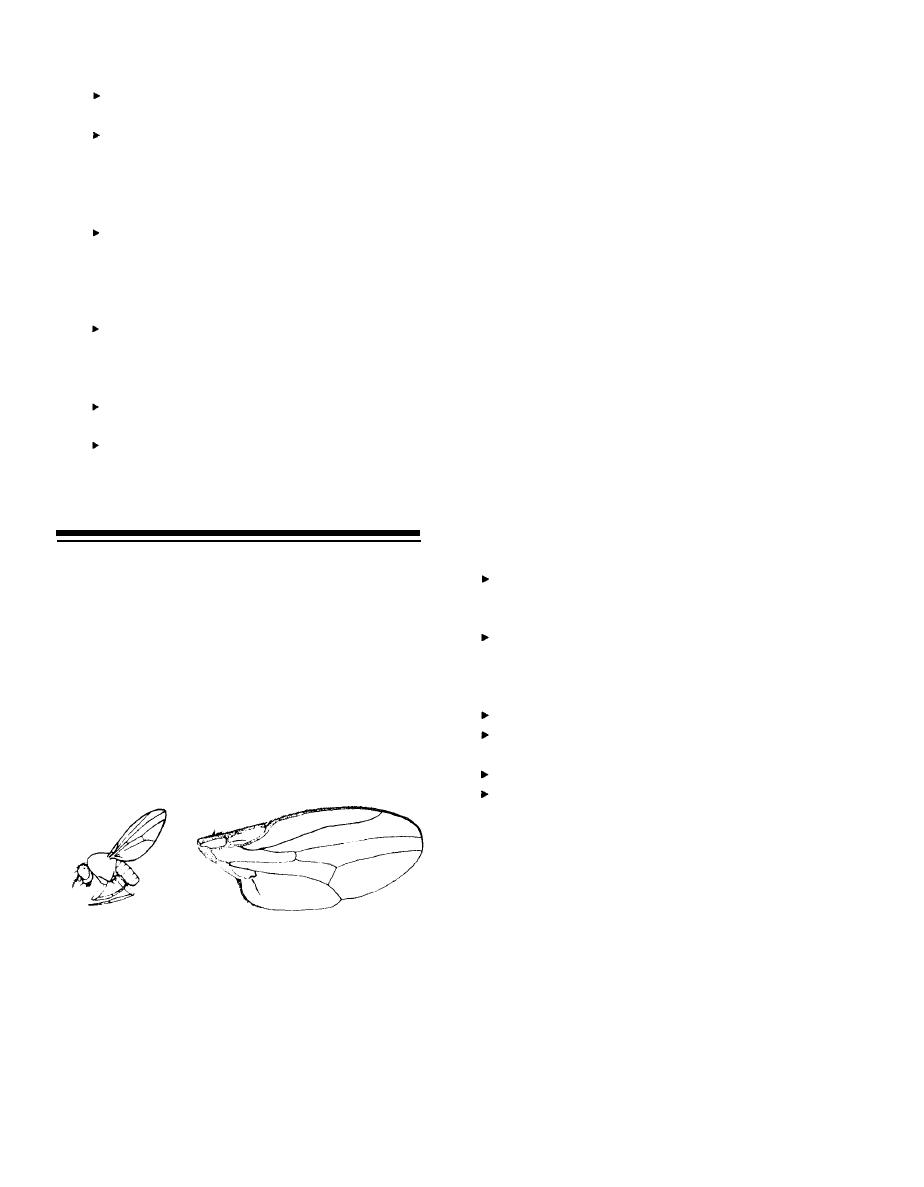

Custom Search
|
|

|
||
 Habitat Alteration
abdomen is light brown to dark with yellow bands.
Caulk cracks and crevices as much as
The wing vein structure is important and can be
seen with a hand lens. It consists of a thickened vein
possible.
Tighten up and caulk around windows
bordering the front margin of the wing from the
and screen ventilating spaces under the
attachment at the thorax to the wing tip. Four other
long veins can be seen on the rest of the wing.
roof.
In a common Fruit fly infestation, flies are
attracted to the sweet odor of fermentation in ripe
Pesticide Application
fruit, like bananas; they lay their eggs in the cracks of
Use liquid pressurized sprays or dusts
the peel. Fruit fly larvae hatch, then feed on yeast
where flies have collected in wall voids.
cells in the fruit. The life cycle can be completed in
Likewise, treat around window and
not much more than a week.
door frames and other cracks and
Newly-emerged adults are attracted to lights, but
crevices.
egg laying females will not leave fermenting materials.
Use aerosols or space sprays where
Fruits, vegetables, beer, fermenting water from
large numbers of flies are active; these
refrigerators, humidifiers, sink drains, sour mops and
formulations will control exposed
rags, and fermenting pet food are good examples of
individuals.
fermenting material. Infestations are common in
Hang sticky fly strips in front of attic
orchards, breweries, restaurants, canneries, hospitals,
windows, especially east windows.
and homes.
Apply residual pesticides labeled for fly
control to surfaces where flies rest,
Inspection
provided those surfaces are not used by
When certain the infesting insect is a fruit fly,
people.
look for fermenting materials. Begin with ripe fruit
and vegetables, then proceed to less obvious
possibilities.
STRUCTURE INFESTING SMALL FLIES
Use fly traps baited with bananas to find
Fruit Flies and Phorid Flies
the most heavily infested areas when the
Drosophila and the family Phoridae
source is very obscure.
These small flies (from two different fly families)
Be sure to inspect outside of the
often are mistaken for each other. They are about l/8
building near windows.
in long and somewhat similar looking, but their
biology and management are very different. Treatment
Habitat Alteration
of these fly infestations are a good example of the site
Tighten up gaps where flies can enter.
specific nature of successful pest management.
Use small mesh screening to exclude
these small flies.
FRUIT FLIES
Discard or clean infested material.
Use precautions to remove flies before
fruit is brought to terminal points when
the infestation originates in the field or
orchard. Infestations in canneries and
fruit markets are particularly difficult to
manage.
PHORID FLIES
Drosophilidae
Wing
Phorids or humpbacked flies are about the same
Several species of Drosophila have been
size as fruit flies or a little smaller. They are dark
immensely beneficial to mankind because of their use
brown and have a humpbacked appearance -- a visual
in the study of genetics and heredity. Fruit flies are
effect caused by a small head located low on the front
attracted to nearly any material that is fermented by
bulge of the thorax.
yeast. These small flies commonly have bright red
Wing venation consists of several short, thickened
eyes, although some species' eyes are dull-dark red.
veins on the foremargin of the wing near the
The head and thorax are yellowish to brown, and the
attachment to the thorax. These veins do not extend to
Module Two, Chapter 1, Pg 4
|
 |
|
 |
||